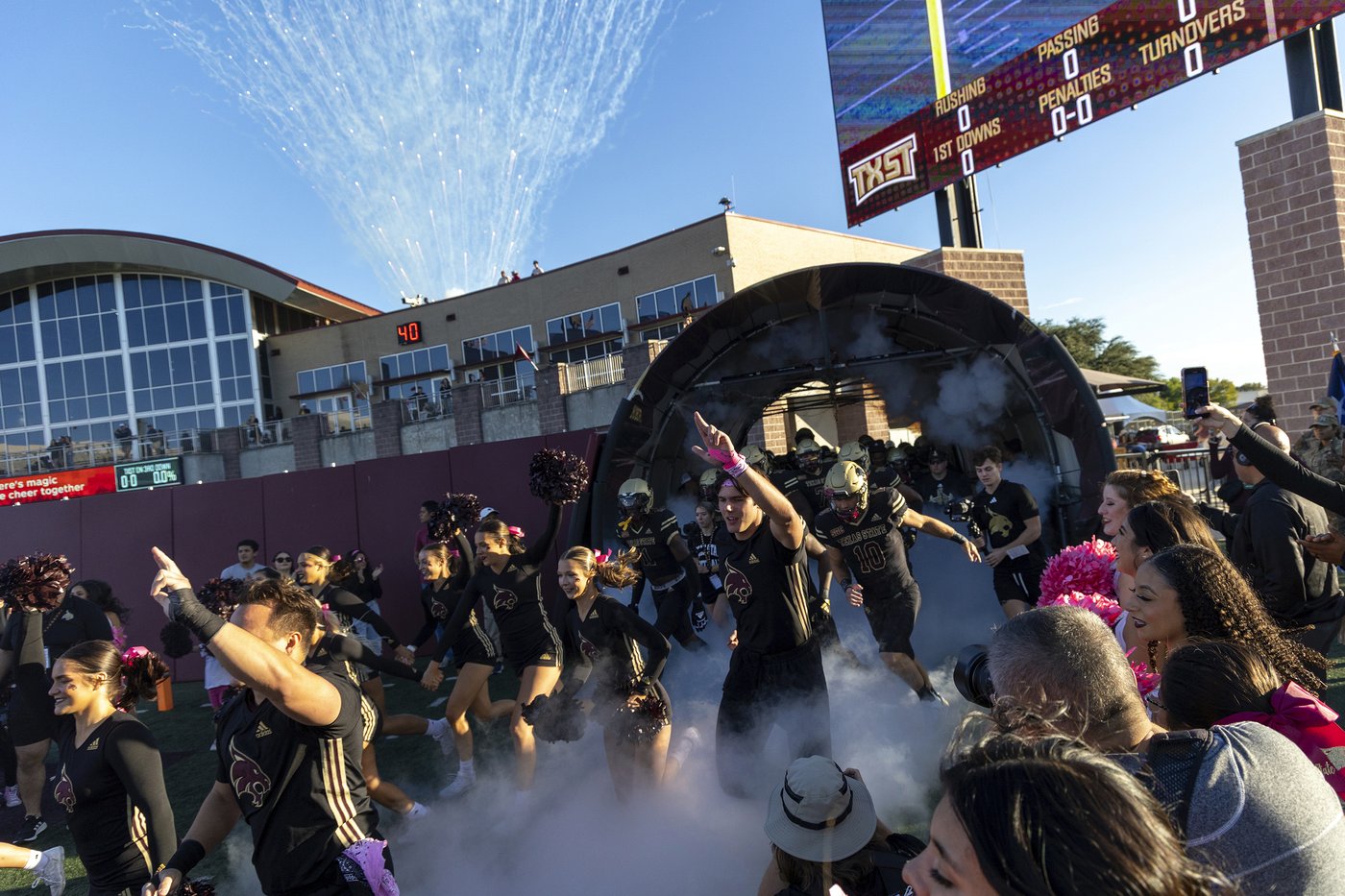Elevate your local knowledge
Sign up for the iNFOnews newsletter today!
[byline]

SAN MARCOS, Texas (AP) — Texas State is joining the Pac-12, giving the rebuilding conference the eighth football-playing school it needed to maintain its status as an FBS conference.
The Pac-12 and Texas State announced Monday that the Bobcats from the Sun Belt Conference will join holdovers Oregon State and Washington State, along with private school Gonzaga and Mountain West-departing schools Boise State, Colorado State, Fresno State, San Diego State and Utah State as the nine foundational members of the reconfigured Pac-12 that will officially launch next summer.
Since Gonzaga doesn’t field a football team, the Pac-12 needed one more to remain eligible as a Football Bowl Subdivision league. Only Oregon State and Washington State had remained in the Pac-12 after the departures of 10 teams to the three other power conferences: the ACC, Big Ten and Big 12.
Texas State regents on Monday approved a $5 million buyout to leave the Sun Belt. The amount of that exit fee was set to double Tuesday.
The Bobcats will become an all-sports member of the Pac-12 on July 1, 2026, after being in the Sun Belt since 2013, a year after their FBS debut in their only season in the Western Athletic Conference. They were 8-5 each of the past two seasons since G.J. Kinne took over as coach, and won the First Responders Bowl both years. They had never been to a bowl game before with only one other winning season in FBS, going 7-5 in 2014 under coach Dennis Franchione.

Texas State’s campus in San Marcos is only about 35 miles south of the University of Texas in Austin. It will be the farthest from the West Coast the Pac-12 has had an all-sports member. Arkansas-Little Rock is now an affiliate member for wrestling.
When the 10 former Pac-12 teams officially departed last year, that created coast-to-coast conferences. Oregon, Washington, Southern California and UCLA went to the Big Ten; Arizona, Arizona State, Colorado and Utah joined the Big 12; and Stanford and California became ACC members.
“We are extremely excited to welcome Texas State as a foundational member of the new Pac-12,” Commissioner Teresa Gould said. “It is a new day in college sports and the most opportune time to launch a new league that is positioned to succeed in today’s landscape with student-athletes in mind.”
The Pac-12 last week struck a media-rights deal with CBS to broadcast a minimum of four football and men’s basketball games per season on its main network and provide a cable and streaming presence for the league from 2026-31.
Sun Belt Commissioner Keith Gill in a statement thanked the Texas State staff for its “collaboration and leadership through a transformative era in college athletics” while also touting the league’s recent football success, including 12 of 14 teams making bowl games in 2023, and seven more last year.
“I will continue to update our stakeholders on developments whenever possible as we work to ensure the sustained rise of the Sun Belt Conference, a collection of like-minded, regional rivals with winning football traditions, passionate fanbases and enduring commitments to excellence in all sports,” Gill said.
Texas State is a national research university with more than 40,000 students, and is among the 25 largest undergraduate enrollments among public universities in the United States. Kelly Damphousse, the president of Texas State, called joining the Pac-12 more than an athletic move.
“It is a declaration of our rising national profile, our commitment to excellence, and our readiness to compete and collaborate with some of the most respected institutions in the country,” Damphousse said. “Our acceptance into the Pac-12 affirms the strength of our academic vision, our commitment to providing access to a Texas State degree, the momentum of our athletic programs, and the ambition that defines this institution.”
Still shifting leagues
While not like the seismic shifts of past summers, there has been a lot of realignment outside the major conferences this year.
On Tuesday, Seattle University will officially return to the West Coast Conference for the first time in 45 years, with WCC Commissioner Stu Jackson on the school’s campus to mark the occasion a year after the school said it was leaving the WAC. Seattle withdrew from the WCC and NCAA Division I in 1980, but returned to that level in 2008 and joined the WAC in 2012.
The Atlantic Sun Conference and the WAC last week announced a strategic alliance that will start in July 2026. That will include the WAC rebranding as the United Athletic Conference, with no schools west of Texas and including five football-playing members from the ASUN. Austin Peay, Central Arkansas, Eastern Kentucky, North Alabama and West Georgia had been part of a football-only UAC with WAC members.
Southern Utah and Utah Tech announced last week they will leave the WAC for the Big Sky Conference starting with the 2026-27 academic year.
Sacramento State is departing the Big Sky for the Big West in all sports except football, since that league doesn’t sponsor football. The NCAA has rejected a waiver request from the Hornets to play next year as an FBS independent rather than an FCS independent.
___
AP college football: https://apnews.com/hub/college-football
Want to share your thoughts, add context, or connect with others in your community?
You must be logged in to post a comment.